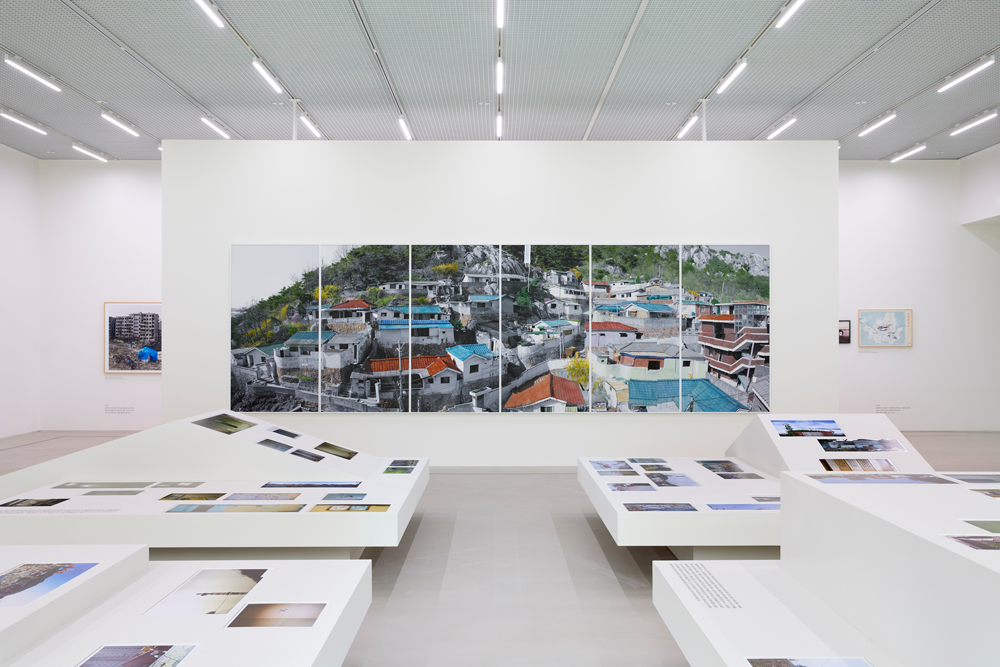 “Everywhere But Nowhere: Seoul through the eyes of Kang Hong-Goo” Installation view. Photo: Sangtae Kim. ©Seoul Museum of Art
“Everywhere But Nowhere: Seoul through the eyes of Kang Hong-Goo” Installation view. Photo: Sangtae Kim. ©Seoul Museum of ArtThe Seoul Museum of Art (SeMA) presents “Everywhere But Nowhere: Seoul through the eyes of Kang Hong-Goo”, a solo exhibition of Kang Hong-Goo, at Art Archives SeMA until August 4.
Using digital images as his main medium since the mid-1990s, Kang Hong-Goo has visually captured daily life environments, representing them in new and unique ways within a field of reality and fiction, seriousness and lightness. His particular focus has been the changes happening in urban space as a result of redevelopment.
Among his subjects of continuous long-term observation are certain urban spaces of Seoul that constitute an important part of his work, typical examples being the Bulgwang-dong neighborhood and the Eunpyeong New Town redevelopment zone in Eunpyeog-gu. Kang wandered around these areas for more than 20 years, documenting the redevelopment process, upon which he based the production of his works. His representative series—Mickey’s House, Trainee, The House and Vanish Away – A Record of Eunpyeong New Town—were all created around the redevelopment process in these areas.
The aim of the exhibition is to interpret Kang’s entire body of work and materials as “Kang Hong-Goo’s Seoul Archive,” with the Art Archives, Seoul Museum of Art’s collection of Kang’s materials at the core. The artist’s photographic images documenting Seoul are significant as the primary subject matter for his main works, but there is much more.
To Kang, Seoul is not just a city, but a pronoun for all cities. Seoul was the window that opened a new horizon for him to observe and explore the social phenomenon called “reorganization of urban space,” and his exploration of that urban space gradually moved beyond Seoul as a foothold, expanding to the Gyeonggi-do area, Busan and Cheongju. In other words, Kang Hong-Goo’s documents related to Seoul have been a central matrix for his work.
“Kang Hong-Goo’s Seoul Archive” leaves plenty of room for interpretation. When we temporarily put aside aesthetic issues, we encounter a body of intriguing material that can be explored not just within the boundaries of art, but also in collaboration with diverse disciplines including the humanities, social sciences, urban studies and architecture, with regard to the transformation of Seoul and its spaces, the consequent changes in people’s lives, issues of change and preservation, and memory and documentation.
During the exhibition period there will be lectures and talks by researchers and artists of various disciplines who propose a “thick reading” of Kang Hong-Goo’s works and documents, as a way to experiment with and practice the different possibilities offered by Kang Hong-Goo’s Seoul Archive.
















